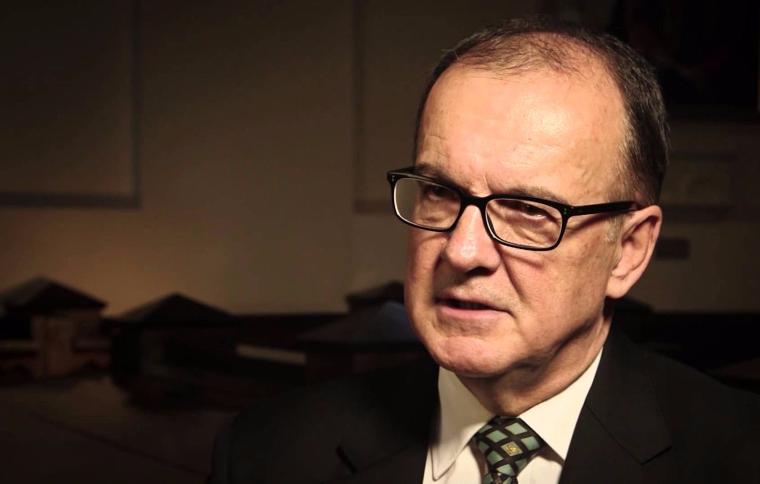It is time for NBN Co Chairman Dr Ziggy Switkowski to call an end to the shell game that is being played out in an effort to carefully manage expectations whilst minimising political damage to Coalition.
NBN Co is a Government Business Enterprise (GBE) tasked with building a national wholesale telecommunications access network. Political interference and poor decision making by the Coalition means that Australia will be left with a second rate network that fails to promote Australia’s digital aspirations.
Australia unfortunately has a bad track record of political interference when it comes to infrastructure projects. This phenomenon is not just a Federal disease; it has become malignant throughout the Australian body politic.

Ultimately the electorate have recourse when politicians go too far, as the Coalition found in Tasmania in the recent federal election where the National Broadband Network (NBN) became a pivotal issue.
But what recourse does the electorate have when government appointed and protected executives take extraordinary actions that might justify an inquiry into any number of misdeeds?
Or is it acceptable that public servants of one guise or another can make decisions that many would construe to be little more than politically motivated with dire financial consequences?
The Australian National Audit Office (ANAO) is a specialist agency providing a full range of audit and assurance services to the Parliament and Commonwealth public sector entities and statutory bodies.
Unfortunately, the ANAO does not have the mandate to look beyond the audit role that it performs in an effort to identify when expenditure is unwarranted or politically motivated.
Several Australian states now have crime and corruption commissions, although calls for a federal body have been unsuccessful, And even if a Federal body were in place, would it have the mandate, capability and skillset needed to link politically-motivated public sector practice to unwarranted use of public monies?
Is it just a series of coincidences or is there now ample evidence that NBN Co was an active participant in the 2016 federal election in breach of the Caretaker Conventions? Is there a politically motivated question mark hanging over what NBN Co is up to?
In just a few short months since the 2016 Federal Election, NBN Co has jettisoned policies that were “written in stone” according to the Prime Minister Malcolm Turnbull in the years and months prior to the election.
In 2012, Mr Turnbull castigated the former Communications Minister Stephen Conroy and the former NBN CEO Mike Quigley for the decision to ignore the Telstra and Optus Hybrid Fibre Coax (HFC) networks in favour of Fibre to the Premises (FTTP).
Mr Turnbull argued frequently that the Optus HFC network could be upgraded and ready for service as part of the NBN before the end of 2016.
On 28 September 2016, NBN CEO Bill Morrow announced that the Optus HFC network, outside the Redcliffe area in Queensland, would now be decommissioned and up to 700,000 premises that were to be connected to the NBN via HFC would now be shifted to another technology.
The announcement by Mr Morrow comes only a month after he announced as many as 1.5 million premises would not be connected to the Telstra and Optus combined HFC footprint.
How could this remarkable outcome have occurred when the raft of Government sponsored NBN related reviews and audits found no evidence that there was a problem with the HFC networks?
When the Coalition Government took power in September 2013, Australian experts warned that based on available evidence the cost, time and effort involved to get the HFC networks up to an ‘NBN-like’ standard was questionable.
The answer to what transpired can be attributed to political interference and the shell game being played by NBN Co at the behest of the Coalition Government. It was vital for the Coalition government in the lead-up to the 2016 election for HFC to be presented as a success story, that it would provide ‘NBN-like’ connection speeds to four million or more premises and that Labor was wrong to ditch HFC. On many occasions Mr Turnbull stated that Labor’s NBN plan was a failure and a joke.
NBN Co played its part well. For the past three years, in the face of overwhelming evidence it wheeled in a veritable football team of international experts to back up Mr Turnbull’s claims that the multi-technology mix is the right approach and that the HFC network would be central to the ‘new’ NBN providing more than four million premises with “NBN like” connection speeds at significantly lower cost than FTTP.
The question remains as to when did the NBN Co board take the decision to jettison 1.5 million premises from HFC? An equally valid question is when did the NBN Co board receive advice that the cost of remediating the Optus HFC network would be too high to proceed.
The answer to the first question is no doubt after the election and the answer to the second question would be in the months prior to the election. There is a simple logic to this deduction.
On 30 June 2016, just days before the election, NBN Co launched its first HFC services with 18,800 premises in Redcliffe Queensland becoming ready for service. Redcliffe was a NBN HFC trial site that initially involved four RSPs and 300 premises.
As a result of this trial and other information gathered over the past three years, NBN Co would have known that the Optus HFC was not fit for purpose and too expensive to remediate.
The NBN Co board would have received updates, and preliminary reports on the trial before the election.
Yes, it is likely that the final trial report and the associated decision to ditch the Optus HFC would have been held over until after the election to provide plausible deniability.
Was it really a coincidence that NBN Co dumped 1.5 million premises from HFC just weeks after a election, one in which the loss of a single seat could have given Australia a different government?
The anger amongst the electorate over NBN Co’s announcements would lead to a reasonable expectation that Labor could have benefited from early advice that 1.5 million premises were to be shifted to yet another second rate technology.
In an effort to minimise the political damage NBN Co has been careful not to mention FTTN when talking of this decision.
Is there to be an investigation into how much has been spent on re-discovering the Optus HFC is not fit for purpose and why local advice was ignored?
The timing of the Australian Federal Police raids, related to NBN Co documents leaked in 2015, was remarkable, right in the middle of the federal election. After six months of investigation, the AFP decided to act in the middle of the campaign and then set about a train of events that the Keystone Cops would have been proud.
Parliament is slowly moving to declare that the documents are privileged, so it should be anticipated that the AFP will not be able to use the documents in court. But the damage has been done. Is there to be an investigation into the timing of the raids?
What motivated the AFP to take a NBN Co employee along, someone that may not have been an appropriate public officer, and to permit the NBN Co employee to photograph documents and to send the photographs to people waiting in the NBN Co headquarters?
Dr Switkowski’s extraordinary article in the media on 28 May defending NBN Co’s efforts to identify the whistle-blowers leaking documents to Senator Conroy’s office did little but add fuel to the fire. NBN Co defended Dr Switkowski over coming days, but the damage was done and NBN Co’s political partisan position was laid bare for all to see.
The NBN Co Corporate Plan 2017 indicates that between 2.0 to 2.5 million premises will receive FTTP, 5.1 to 6.5 million premises will receive FTTN/B/dp, 2.5 to 3.2 million premises will receive HFC and 0.9 to 1.1 million will receive Fixed Wireless and Satellite.
So after seven years of the NBN rollout, NBN Co still does not know what it’s doing and how many premises will be connected to each of the available technologies.
As much as a 20 per cent variance is provided for some of the technologies with the end result being that 6.5 million or more premises could end up with the second rate FTTN/B technologies.
Having apparently wasted three years and upwards of a hundred million dollars re-discovering that the Optus HFC was not fit for purpose, is it reasonable that the NBN Co CEO Mr Morrow was paid $3.6 million in total remuneration in fiscal year 2016, when he presides over a GBE that is yet to have a working plan to complete the NBN rollout?
What does this tell us about governance at NBN Co?
There has been a lot of hype surrounding Mr Morrow’s announcements that many of the 1.5 million premises unlucky enough to miss out on HFC will be connected to the NBN using FTTdp at some time in 2018 or later. Expect to hear a lot about FTTdp being ‘NBN-like’ providing gigabit speeds.
But don’t expect the FTTdp to be PON-based, nor for there to an opportunity to self-install fibre lead-ins that would result in FTTP. NBN Co is not a party to miracles for those that want the original FTTP design.
NBN Co’s response to a request for the technical details of the FTTdp design was that it was too early for a technical design to be provided. Alarm bells are ringing.
The shell game continues, NBN Co continues its efforts to manage expectations by making unwarranted statements about possible future intent.
No doubt the Coalition is hard at work coming up with a strategy to minimise the political damage the second rate multi-technology mix NBN will have at the next federal election.
Dr Mark Gregory is a Senior Lecturer in the School of Engineering at RMIT University.
Do you know more? Contact James Riley via Email.

